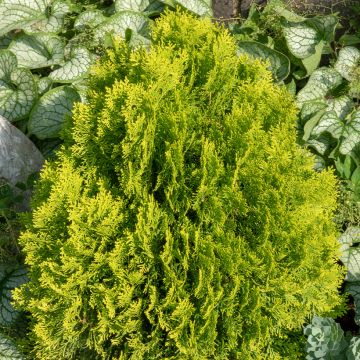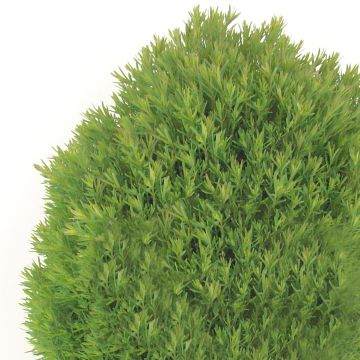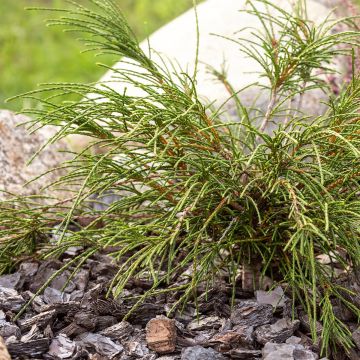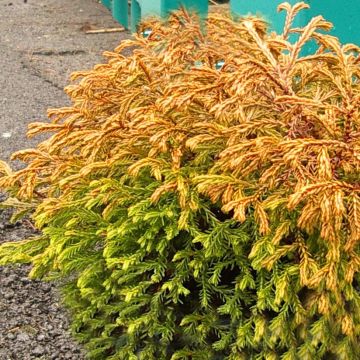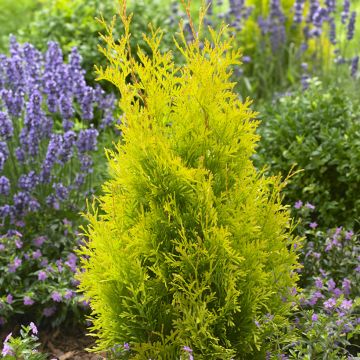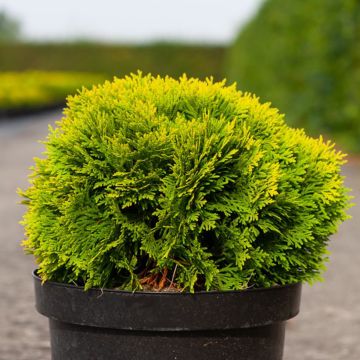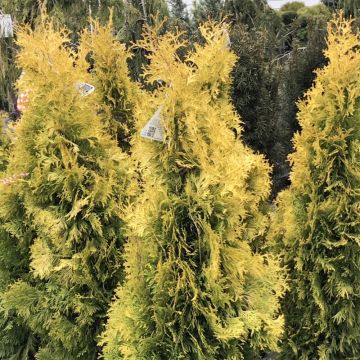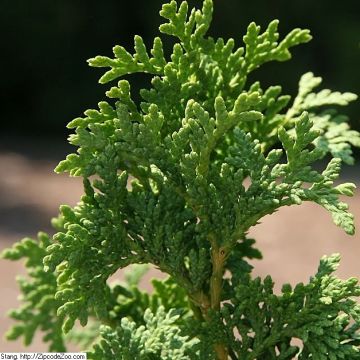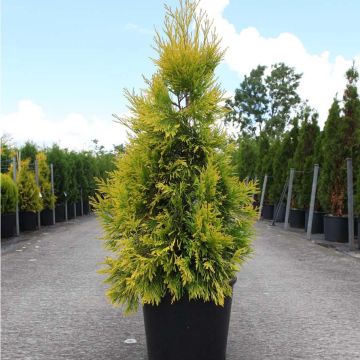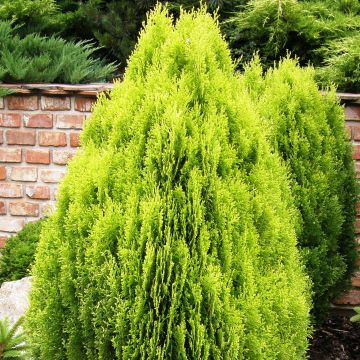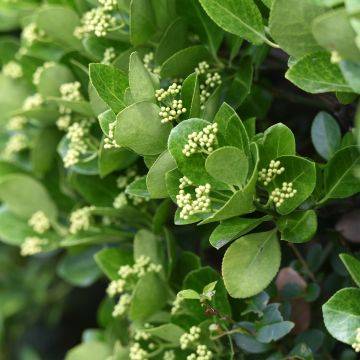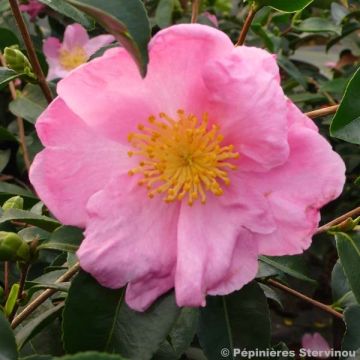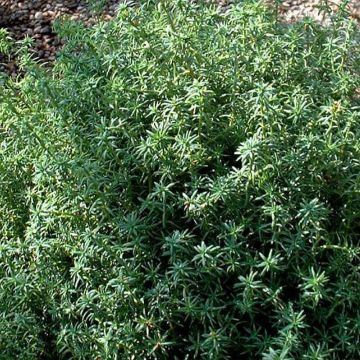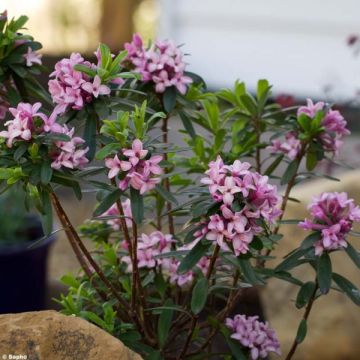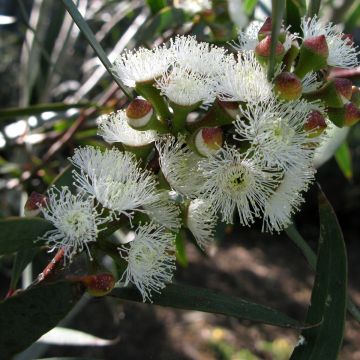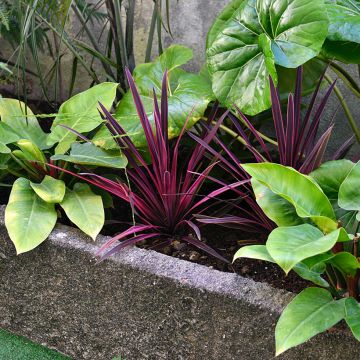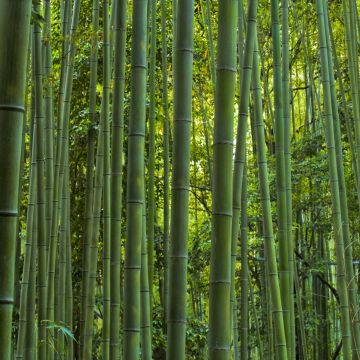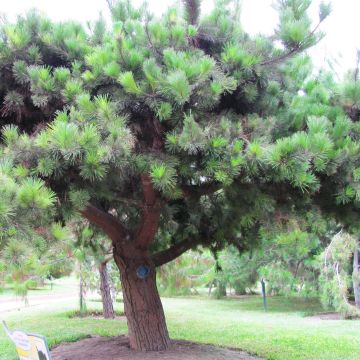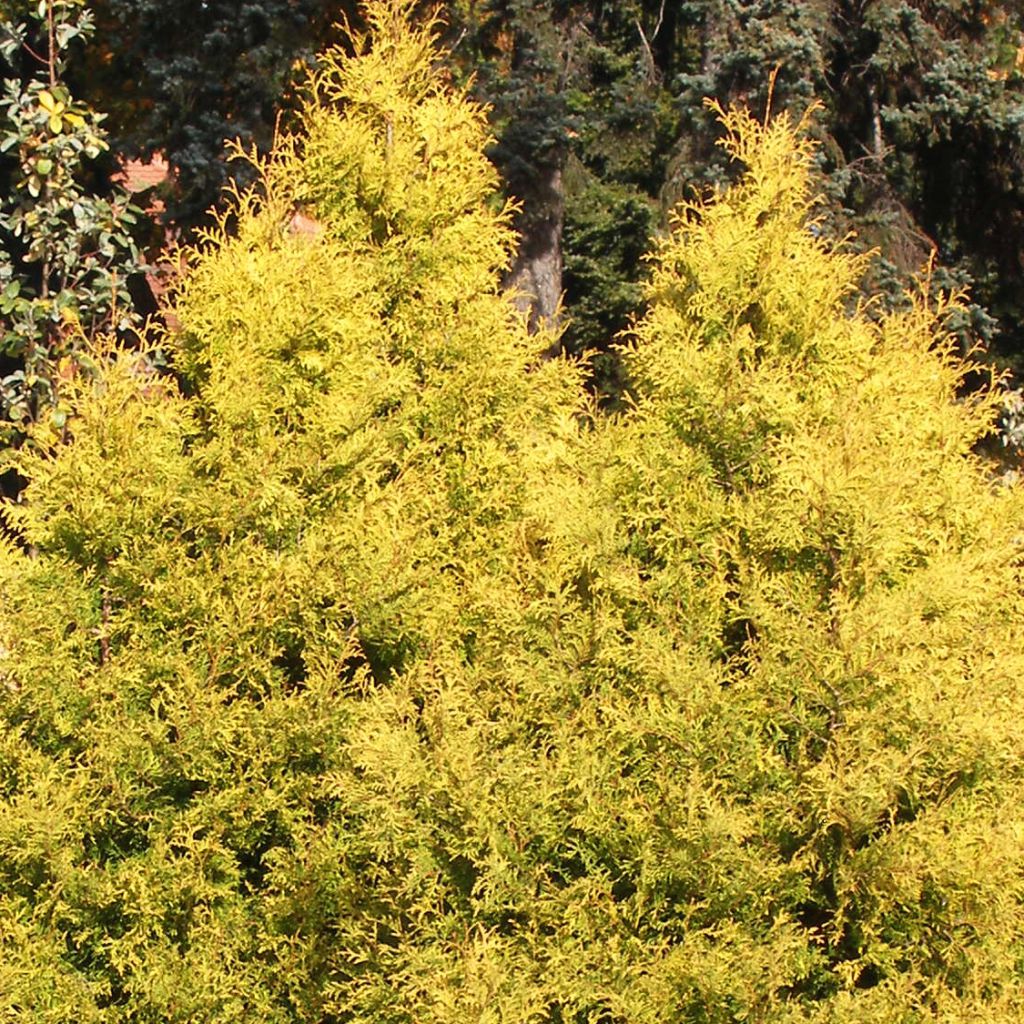

Thuja occidentalis Rheingold - Canadian Arborvitae
Thuja occidentalis Rheingold - Canadian Arborvitae
Thuja occidentalis Rheingold
Eastern White Cedar, Northern White Cedar, American Arborvitae, Eastern Arborvitae
This item cannot be shipped to the selected country
Delivery charge from €5.90
Delivery charge from €5.90
More information
Schedule delivery date,
and select date in basket
This plant carries a 24 months recovery warranty
More information
We guarantee the quality of our plants for a full growing cycle, and will replace at our expense any plant that fails to recover under normal climatic and planting conditions.
From €5.90 for pickup delivery and €6.90 for home delivery
Express home delivery from €8.90.
From €5.90 for pickup delivery and €6.90 for home delivery
Express home delivery from €8.90.


Does this plant fit my garden?
Set up your Plantfit profile →
Description
The Thuja occidentalis 'Rheingold' is a small bush from Canada, truly sumptuous, with a conical and wide habit, which offers a range of copper, bronze, and golden hues throughout the seasons competing with splendour and richness. Its flat and finely architectural foliage is initially made up of spring shoots in coppery pink that then release flat branchlets covered in gold in summer, gradually turning to coppery orange and then to bronze in winter. Its slow growth and moderate size allow for numerous uses, in a rock garden, as a standalone plant, in flower beds with perennials or bushes, or even in a large pot on the terrace. It is also a hardy conifer that can tolerate well-drained soil that is not too dry, and a sunny position.
The Thuja occidentalis, also known as Eastern White Cedar or Northern White Cedar, is sometimes called the White Cedar of Canada or Balai. It is an evergreen conifer from the cypress family native to northeastern North America. In its natural habitat, it reaches a height of 15 to 20 m (49 in 2 ft - 65 in 7 ft), with a beautiful conical habit and a trunk covered in a highly decorative reddish-brown exfoliating bark. It is a perfectly hardy species, well adapted to temperate climates and poor, moist, or occasionally dry soils. Its almost rot-resistant, light, fragrant, and easily flammable wood is suitable for various uses. It has given rise to more than 300 cultivars selected for their ornamental qualities.
The 'Rheingold' variety, derived from this species, enjoys well-deserved success. This thuja stands out for its modest size, initially spherical and then very wide conical habit, and its wonderful foliage with changing colours. It has slow growth, so it will reach 2 m (6 ft 7 in) in height with a 1.5 m (4 ft 11 in) spread at maturity, after many years. This conifer reveals aromatic foliage when crushed. It consists of flattened branchlets arranged in planes, covered with scale-like leaves 3 to 5 mm long. The leaves, overlapping each other, give the branchlets a flat appearance. The foliage, overall golden, takes on different coppery hues throughout the season, creating a beautiful effect. The pollen cones appear in spring, start turning yellow, and then become pale brown. The bark, reddish-brown and shiny on young subjects, quickly becomes fibrous. With age, it peels off in long, narrow, brownish-gray strips, usually flat. Sometimes they wrap around the trunk.
The 'Rheingold' Western Thuja is ideal for all gardens, even the smallest ones, as it is a magnificent and undemanding plant that requires very little maintenance. It can be planted in a large rock garden, as a small screen, freely or in groups of three near an entrance. It can be planted in a large rockery, as a small screen, free-standing or in groups of three near an entrance. It can also be planted in a pretty tub on a terrace or balcony. It goes well with untidy bushes, large stones, the geometric lines of swimming pools or houses, and masonry. It can be combined with complementary grasses, dwarf conifers with a prostrate habit (Juniperus horizontalis Blue Chip), globular conifers (Picea abies Little Gem), or the indestructible Microbiota decussata, whose autumn colour is a perfect match.
Report an error about the product description
Thuja occidentalis Rheingold - Canadian Arborvitae in pictures
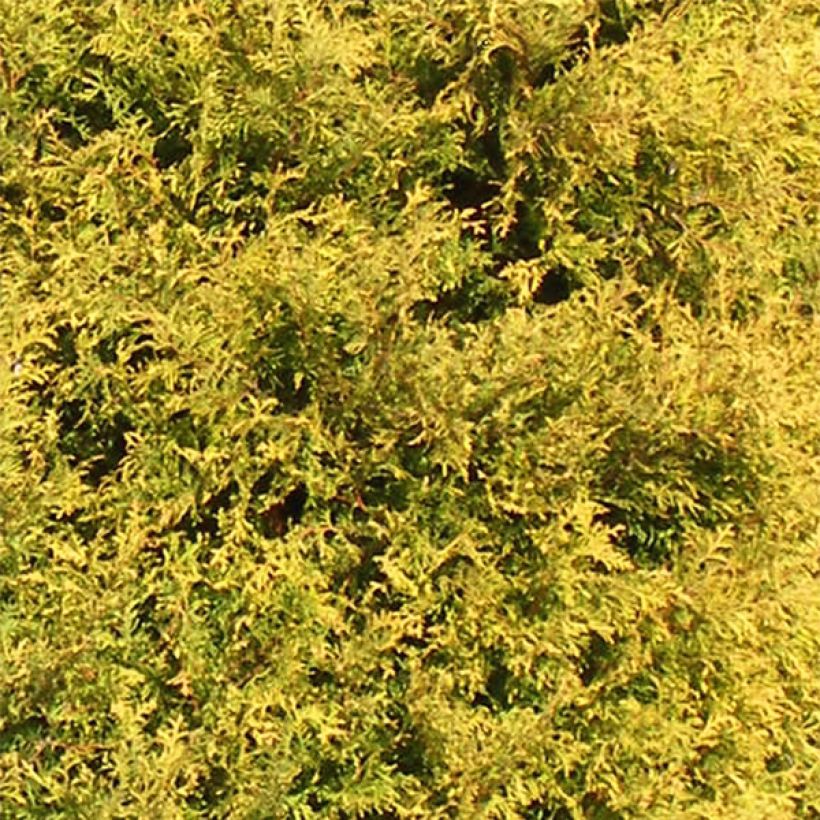

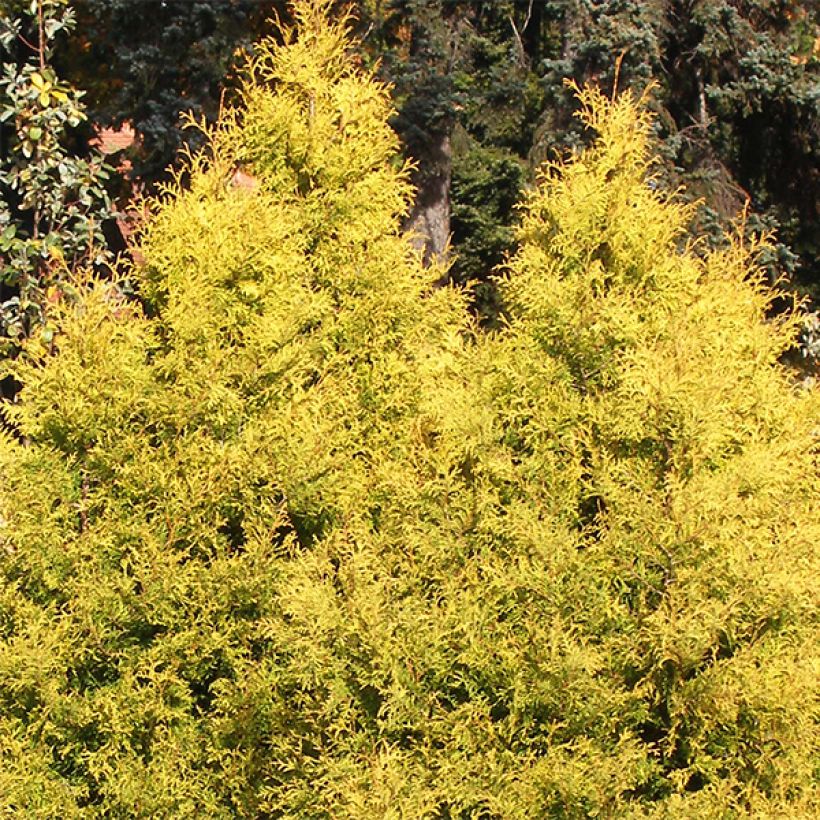

Plant habit
Foliage
Botanical data
Thuja
occidentalis
Rheingold
Cupressaceae
Eastern White Cedar, Northern White Cedar, American Arborvitae, Eastern Arborvitae
Cultivar or hybrid
Other Thuya - Thuja
Planting and care
If you want to plant Thuja occidentalis 'Rheingold', the best time is from September to November or February to June. The plant prefers deep, loose, and slightly chalky soil that retains some moisture. However, it can tolerate summer drought once it has established itself. If you live in a warm climate, choosing a location sheltered from strong winds and partially shaded is best. Before planting, make sure to soak the root balls thoroughly. Optionally, you can add organic fertiliser at planting time and water generously during the first few years and prolonged droughts. If your soil is poor, you can apply a special conifer fertiliser every April and cultivate the soil in the summer. This hardy conifer can withstand temperatures as low as -25°C and does not require pruning.
Planting period
Intended location
Care
-
, onOrder confirmed
Reply from on Promesse de fleurs
Evergreen shrubs
Haven't found what you were looking for?
Hardiness is the lowest winter temperature a plant can endure without suffering serious damage or even dying. However, hardiness is affected by location (a sheltered area, such as a patio), protection (winter cover) and soil type (hardiness is improved by well-drained soil).

Photo Sharing Terms & Conditions
In order to encourage gardeners to interact and share their experiences, Promesse de fleurs offers various media enabling content to be uploaded onto its Site - in particular via the ‘Photo sharing’ module.
The User agrees to refrain from:
- Posting any content that is illegal, prejudicial, insulting, racist, inciteful to hatred, revisionist, contrary to public decency, that infringes on privacy or on the privacy rights of third parties, in particular the publicity rights of persons and goods, intellectual property rights, or the right to privacy.
- Submitting content on behalf of a third party;
- Impersonate the identity of a third party and/or publish any personal information about a third party;
In general, the User undertakes to refrain from any unethical behaviour.
All Content (in particular text, comments, files, images, photos, videos, creative works, etc.), which may be subject to property or intellectual property rights, image or other private rights, shall remain the property of the User, subject to the limited rights granted by the terms of the licence granted by Promesse de fleurs as stated below. Users are at liberty to publish or not to publish such Content on the Site, notably via the ‘Photo Sharing’ facility, and accept that this Content shall be made public and freely accessible, notably on the Internet.
Users further acknowledge, undertake to have ,and guarantee that they hold all necessary rights and permissions to publish such material on the Site, in particular with regard to the legislation in force pertaining to any privacy, property, intellectual property, image, or contractual rights, or rights of any other nature. By publishing such Content on the Site, Users acknowledge accepting full liability as publishers of the Content within the meaning of the law, and grant Promesse de fleurs, free of charge, an inclusive, worldwide licence for the said Content for the entire duration of its publication, including all reproduction, representation, up/downloading, displaying, performing, transmission, and storage rights.
Users also grant permission for their name to be linked to the Content and accept that this link may not always be made available.
By engaging in posting material, Users consent to their Content becoming automatically accessible on the Internet, in particular on other sites and/or blogs and/or web pages of the Promesse de fleurs site, including in particular social pages and the Promesse de fleurs catalogue.
Users may secure the removal of entrusted content free of charge by issuing a simple request via our contact form.
The flowering period indicated on our website applies to countries and regions located in USDA zone 8 (France, the United Kingdom, Ireland, the Netherlands, etc.)
It will vary according to where you live:
- In zones 9 to 10 (Italy, Spain, Greece, etc.), flowering will occur about 2 to 4 weeks earlier.
- In zones 6 to 7 (Germany, Poland, Slovenia, and lower mountainous regions), flowering will be delayed by 2 to 3 weeks.
- In zone 5 (Central Europe, Scandinavia), blooming will be delayed by 3 to 5 weeks.
In temperate climates, pruning of spring-flowering shrubs (forsythia, spireas, etc.) should be done just after flowering.
Pruning of summer-flowering shrubs (Indian Lilac, Perovskia, etc.) can be done in winter or spring.
In cold regions as well as with frost-sensitive plants, avoid pruning too early when severe frosts may still occur.
The planting period indicated on our website applies to countries and regions located in USDA zone 8 (France, United Kingdom, Ireland, Netherlands).
It will vary according to where you live:
- In Mediterranean zones (Marseille, Madrid, Milan, etc.), autumn and winter are the best planting periods.
- In continental zones (Strasbourg, Munich, Vienna, etc.), delay planting by 2 to 3 weeks in spring and bring it forward by 2 to 4 weeks in autumn.
- In mountainous regions (the Alps, Pyrenees, Carpathians, etc.), it is best to plant in late spring (May-June) or late summer (August-September).
The harvesting period indicated on our website applies to countries and regions in USDA zone 8 (France, England, Ireland, the Netherlands).
In colder areas (Scandinavia, Poland, Austria...) fruit and vegetable harvests are likely to be delayed by 3-4 weeks.
In warmer areas (Italy, Spain, Greece, etc.), harvesting will probably take place earlier, depending on weather conditions.
The sowing periods indicated on our website apply to countries and regions within USDA Zone 8 (France, UK, Ireland, Netherlands).
In colder areas (Scandinavia, Poland, Austria...), delay any outdoor sowing by 3-4 weeks, or sow under glass.
In warmer climes (Italy, Spain, Greece, etc.), bring outdoor sowing forward by a few weeks.

































